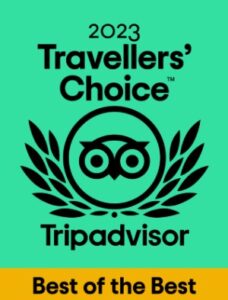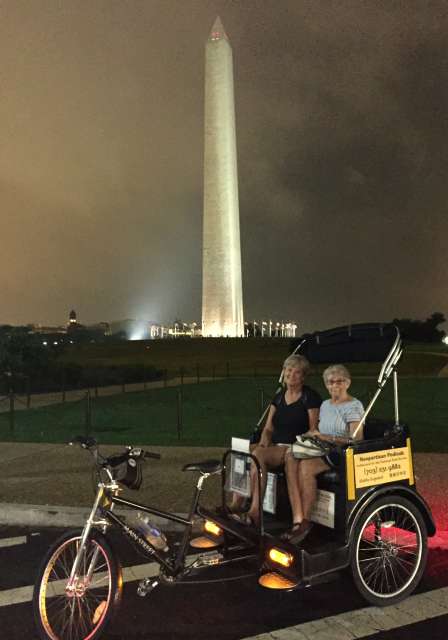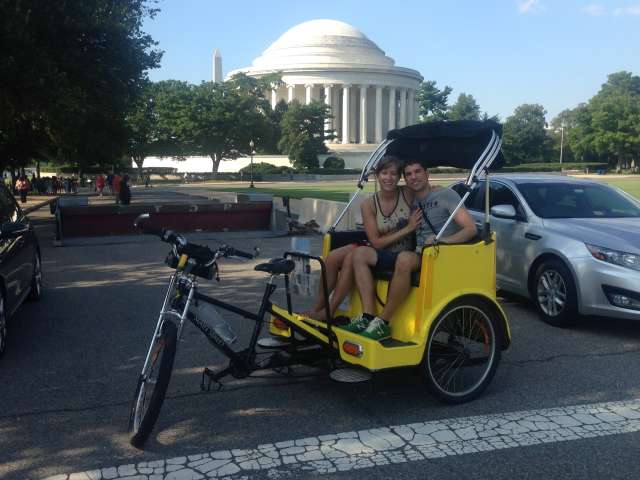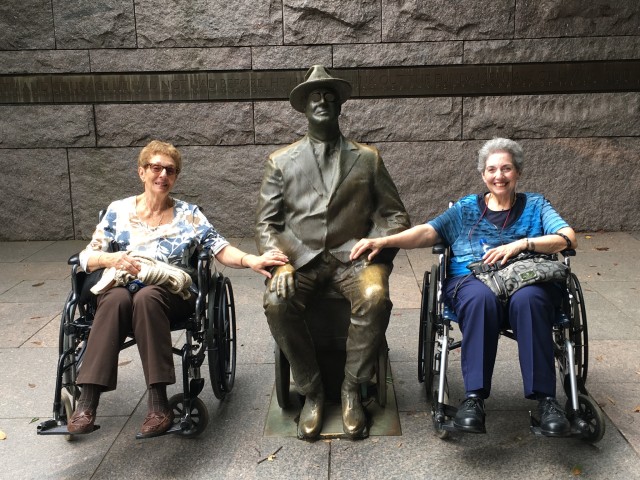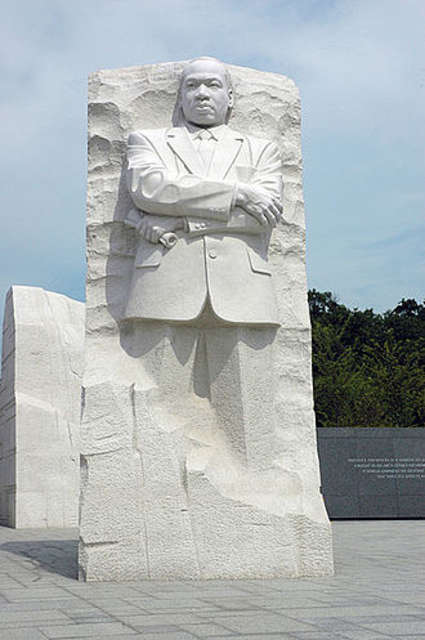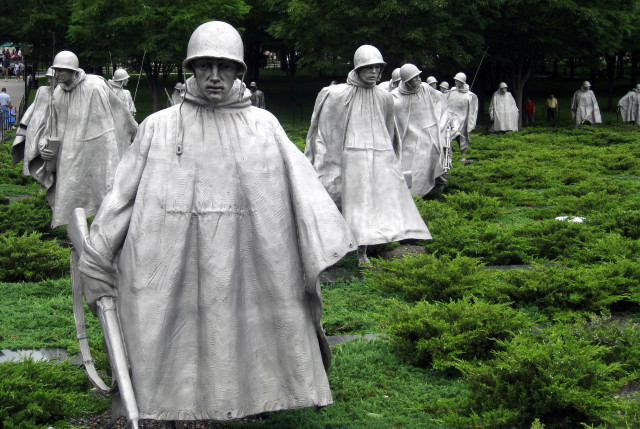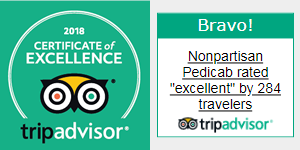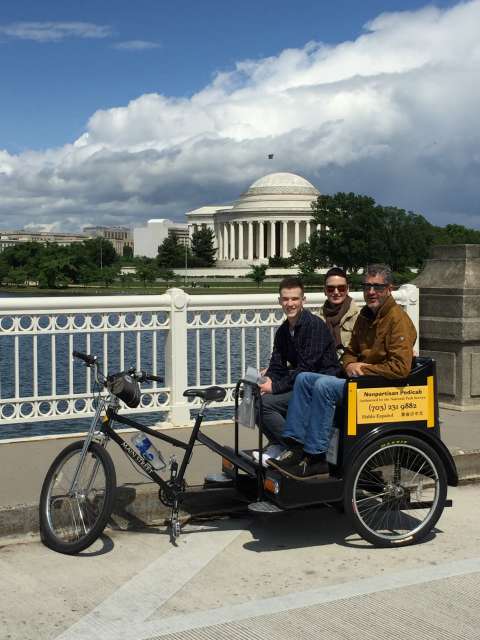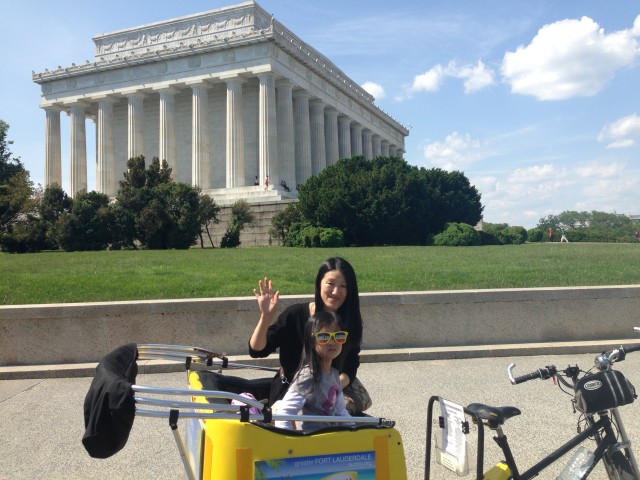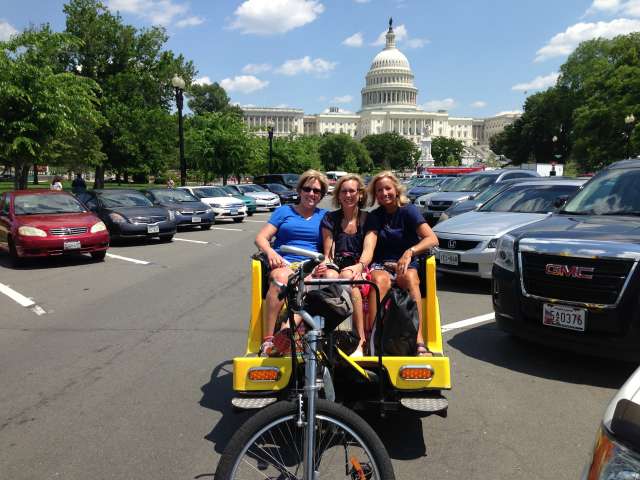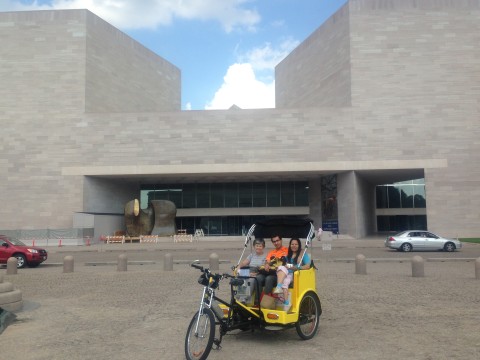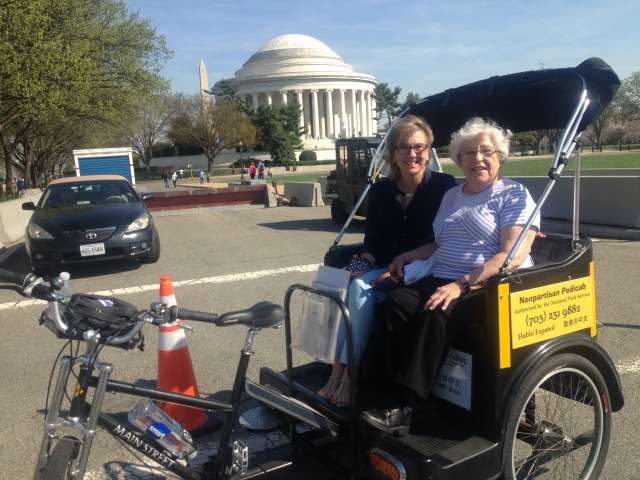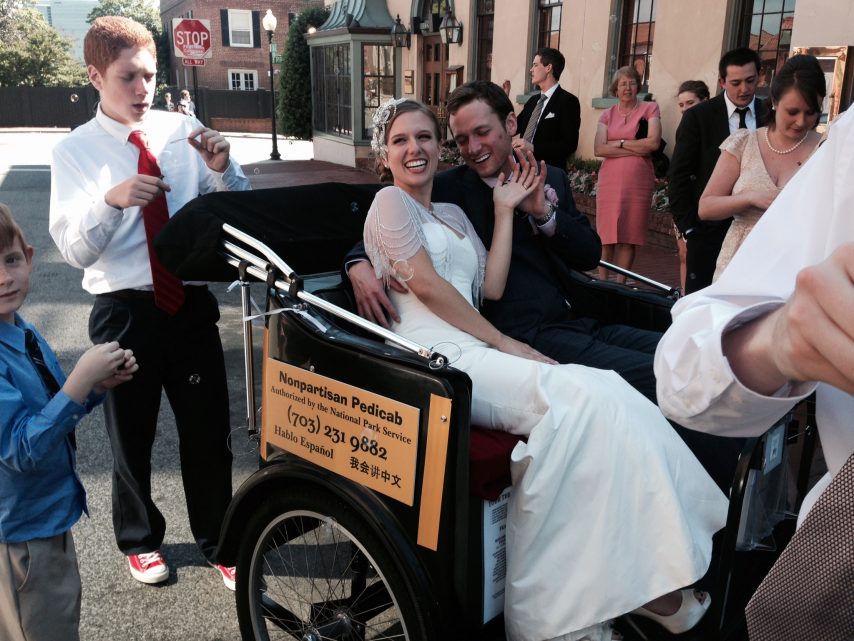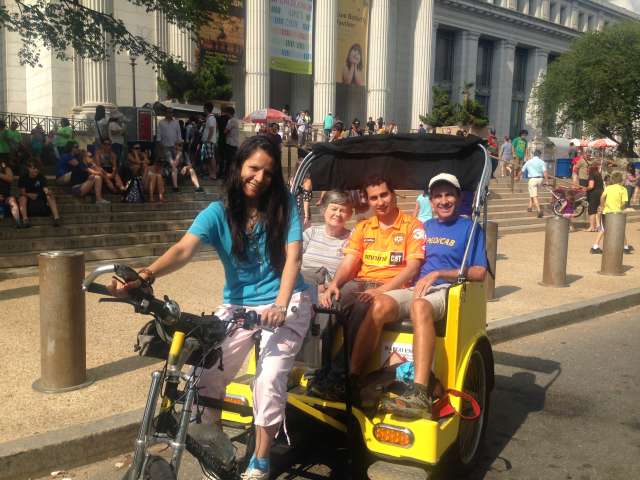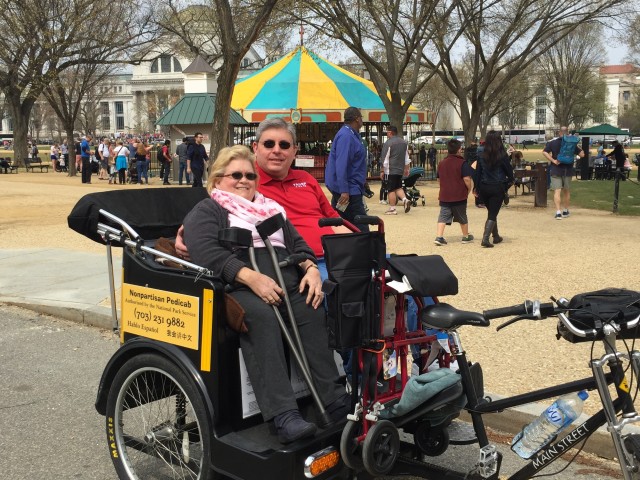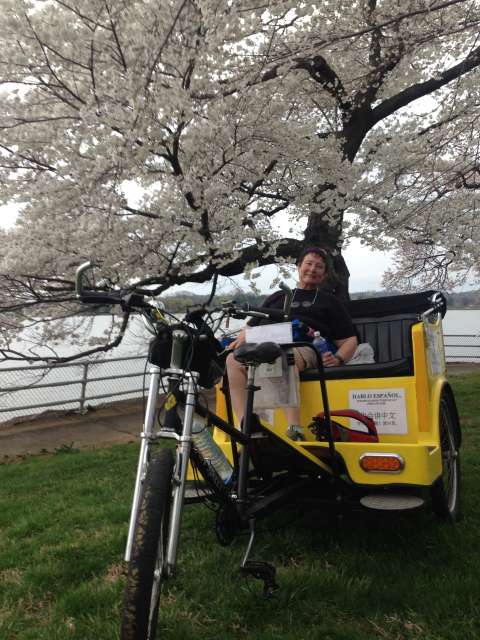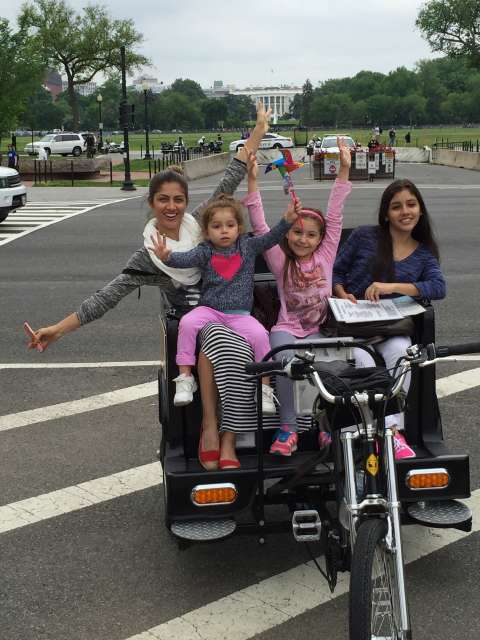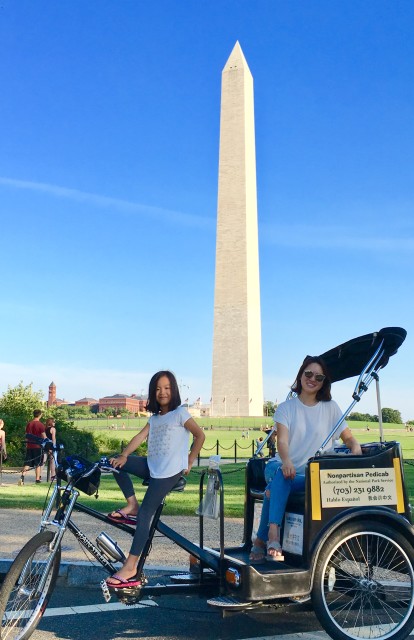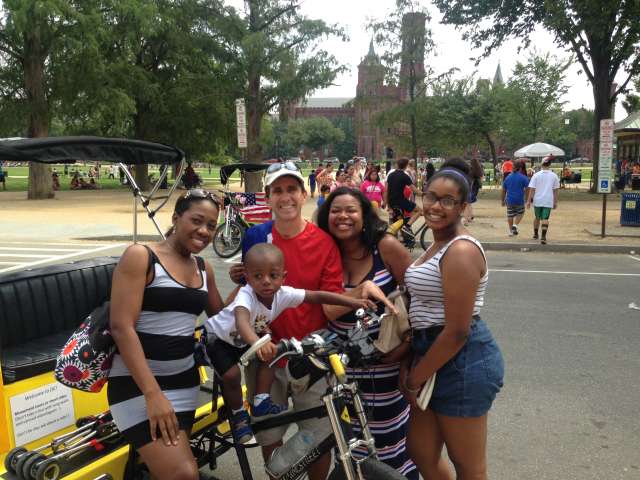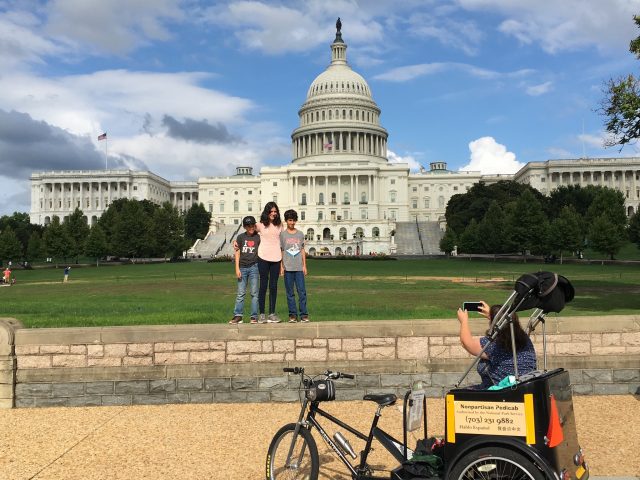What to see in Washington DC?
Here are some Insider Tips on
The Things Savvy Visitors Need to See
Washington DC can be overwhelming to the first time visitors attempting to plan a visit to the nation's capital. There's so much to see and do. There may be many attractions you've never even heard of.
Did you even know there were 10 major memorials in and around the National Mall in addition to quite a few lesser known monuments? Or that there are almost 20 major museums right downtown? How about the great buildings of our national government including the White House, the US Capitol and the enormous government departments that line the Inaugural Parade Route along Pennsylvania Avenue?
And then there are the historic neighborhoods of Georgetown, Embassy Row, Dupont Circle and Capitol Hill. With so many attractions, how do you decide exactly what to see in Washington DC to make the most of your visit?

The National Mall and the Memorials
The National Mall and the memorials are at the top of the list for places to see in Washington DC. The National Mall is a national park that extends 2.5 miles from the steps of the US Capitol to the Lincoln Memorial. In one half of this park, you will find numerous Smithsonian Museums. At the other end, you will find all the national monuments and memorials like the Washington Monument, the Lincoln Memorial, the Jefferson Memorial, the MLK Memorial, the Franklin Roosevelt Memorial, the WWII Memorial, the Korean War Memorial, and the Vietnam War Memorial. All of the memorials are free to the public and open 24 hours a day, 365 days a year. They are spread out, so visiting all of them on foot on a single day is quite an endeavor.
Lincoln Memorial
Abraham Lincoln is known as the preserver of the nation due to his iron will in keeping the country together during the Civil War. Many people consider the Lincoln Memorial to be the crown jewel of the National Mall. From the steps of the Lincoln Memorial, you get a grand vista of the entire National Mall. If you only visit one memorial, this is probably the one to go to. In the evening, the Lincoln Memorial is lit up spectacularly. The Reflecting Pool that you see from the steps of the Lincoln Memorial reflects the Washington Monument and the US Capitol.
Washington Monument
"First in war. First in peace. First in the hearts of his countrymen." George Washington was the commanding general during the Revolutionary War, presided over the Constitutional Convention in 1787, and became the first president of the United States. His monument stands right in the center of the National Mall overlooking the entire city. The Washington Monument has an observation deck open to the public. Even if you don't go to the top, the construction is magnificent and visible from anywhere in the city. If you do want to go to the top, either get your tickets a long time in advance from the recreation.gov website (reservation fee $1.50 per person) or come very early in the morning to see if you can score first-come-first served free same-day tickets. Note, that due to Covid restrictions still in effect as of March, 2021, entry into the interior of the Washington Monument is temporarily suspended until further notice.
Jefferson Memorial
The Jefferson Memorial celebrates the author of the Declaration of Independence and the third president of the United States. This monument overlooks the Tidal Basin and is the center of attention during the Cherry Blossom Festival. From the plaza in front of the memorial, the visitor gets a tremendous view of all the cherry trees in bloom. The Jefferson Memorial is often one that is missed by visitors who choose to walk the National Mall on foot because it requires a detour around the Tidal Basin. This monument is particularly poignant at twilight.
FDR Memorial (Franklin Delano Roosevelt Memorial)
The FDR Memorial celebrates our 32nd president. He guided America through the Great Depression and then through the Second World War. This memorial is quite different from the imposing marble temples dedicated to Lincoln and Jefferson. Instead, the FDR Memorial is low to the ground and is composed of 4 open air rooms. Each room represents one of the 4 terms that FDR was elected to be president. Each room has three elements. There are statues in each room (two of FDR himself, one of First Lady Eleanor Roosevelt and others relating to the Great Depression). The second element are famous quotes of FDR inscribed into the granite walls. The third element comprises the theme of running water, which flows throughout the memorial. Many visitors find the FDR Memorial to be their favorite in Washington DC.
MLK Memorial (Martin Luther King, Jr. Memorial)
The MLK Memorial is the newest memorial on the National Mall, and the only memorial built to a famous American who was not a president. Dr. Martin Luther King, Jr. was the foremost civil rights leader in American history. The MLK Memorial overlooks the Tidal Basin and is the best location to see the Cherry Blossoms when they are in full bloom. Whether day or evening, the MLK Memorial is a beautiful new addition to the National Mall.
Vietnam War Memorial
The official name of this memorial is the Vietnam Veterans Memorial. Finished in 1982, the Wall consists of a list of names of more than 58,000 American servicemen who died in Vietnam. The sheer quantity of names on the Wall cannot fail to impress anyone who visits. To this day, the Vietnam Memorial is visited by many people who wish to honor their loved ones or fallen comrades who died in Vietnam. There is a system to easily locate any individual name on the Wall. Many people come to leave flowers or other objects in the honor of a loved one or comrade-in-arms lost during the war. On Memorial Day weekend, the Vietnam War Memorial is the site of many public events and a huge gathering of war veterans comes here every year. During the day, you can see the memorial more clearly, but after dark the Vietnam Memorial takes on a much more somber aspect. The Vietnam Veterans Memorial is just northeast of the Lincoln Memorial.
Korean War Memorial
The Korean War Memorial honors the sacrifice of more than 36,000 American servicemen who died in the Korean War between 1950-1953. The monument consists of 19 larger than life statues marching through a minefield in a freezing rain on a Korean mountainside. These statues reflect in a black granite wall. The 19 statues and the 19 reflections add up to the number 38 -- representative of the 38th Parallel that still divides South and North Korea even today. The monument is particularly poignant after dark, where the statues are lit up in a ghostly fashion. Korean War Memorial is just to the southeast of the Lincoln Memorial.
WWII Memorial
Opened in 2004, the principle feature of the WWII Memorial is a black panel with 4048 stars. Each star represents 100 United States military deaths during the Second World War. There are 56 columns surrounding a large fountain. Each column represents a US state or territory that fought in WWII. There are also two archways -- Pacific and Atlantic. Underneath each archway is a listing of major battles fought in that theater of the war. The WWII Memorial is midway between the Washington Monument and the Lincoln Memorial. This monument is spectacular at night.
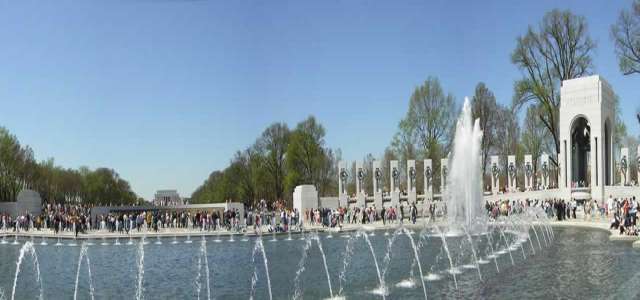
Albert Einstein Memorial
The Albert Einstein Memorial is just off the National Mall in front of the National Academy of Sciences, not far from the Vietnam Memorial and the Lincoln Memorial. It is an amazing sculpture by the great artist Robert Berks, and dedicated in 1979. Many kids find this to be their favorite monument since because they are welcome to climb onto the statue and sit or stand on Einstein's lap. You might notice that the nose has been rubbed shiny from so many people who have stood on Einstein's lap and held onto the nose for balance. Look for the secret echo by standing right at the North Star on the star map in front of the Einstein Memorial and talking toward the hand or the knee.
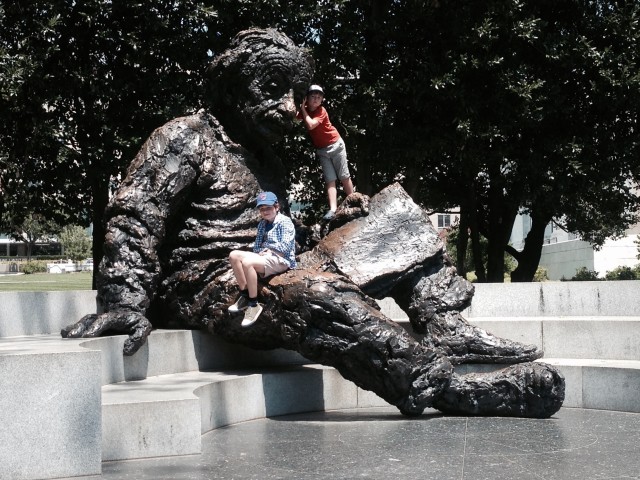
Smithsonian Museums
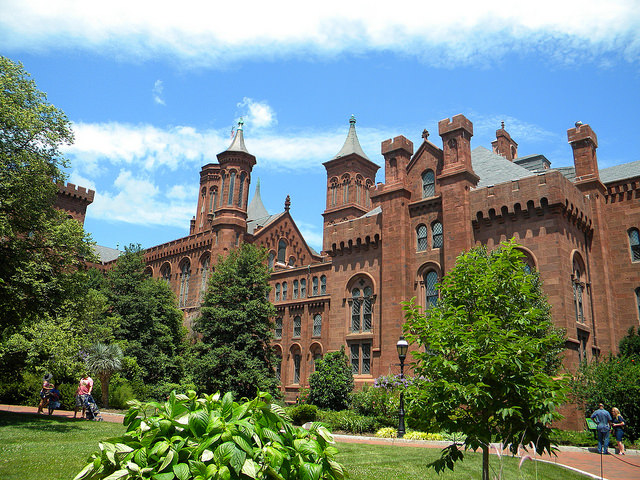
The Smithsonian Institution operates 20 separate museums -- 18 of them are located right here in Washington DC, with many of the largest museums located right on the National Mall. Best of all, these museums are always free.
Generally, Smithsonian opening hours are from 10:00 AM to 5:30 PM. A few of the larger museums have extended hours until 7:30 PM during some weekend days during the spring/summer high season. The following is a list of the major Smithsonian Museums in Washington DC.
- Smithsonian Natural History Museum
- Smithsonian Air and Space Museum
- Smithsonian American History Museum
- Smithsonian National Museum of the American Indian
- Smithsonian National African American History and Culture Museum
- Smithsonian Portrait Gallery and American Art Museum
- Smithsonian Renwick Gallery
- Smithsonian National Zoo
- Smithsonian Postal Museum
- Smithsonian Freer Gallery of Art
- Smithsonian Sackler Gallery of Art
- Smithsonian African Art Museum
- Smithsonian Castle
- Smithsonian Hirshhorn Gallery of Art
- Smithsonian Anacostia Community Museum
Most of these are right on the National Mall, and all but two of the others are in the downtown area and within walking distance of National Mall. The Smithsonian Zoo and the Smithsonian Anacostia Community Museum are both out of the downtown core. You will have to drive or take public transportation to get to either of them.
Here is what you would expect to see in each of the museums:
Smithsonian Natural History Museum
Dinosaurs, ice age mammals, modern mammals including an enormous African elephant under the main dome, the oceans, exhibits on primitive man, a gemstone exhibit with the Hope Diamond (largest blue diamond in the world), IMAX theater with films concerning natural history, a live butterfly room you can walk through, etc. Inside the museum there is a cafeteria style restaurant. This museum is huge, and you shouldn't expect to see every exhibit in a single visit, even if you spend all day. The Smithsonian Natural History Museum is considered one of the best of its kind in the entire world. It's a must-see for famiies with children. The museum can get very busy with school groups, especially between April and June. Check the Smithsonian extended hours calendar to see if they are open late or have any special events.

Smithsonian Air and Space Museum
History of air travel and space exploration. Hanging from the ceiling are many actual historic planes like the Wright Brothers first plane, the Spirit of St. Louis, and a U-2 spy plane. There are actual rockets on display. The capsule that returned from the original Apollo moon mission, along with actual moon rocks that you can touch. There is a Planetarium, an IMAX theater, flight simulators and virtual reality machines. There is a food court downstairs with several different options for lunch. For families with children, this is a must-see. The Smithsonian Air and Space Museum is one of the most well-known museums in the world, and it is probably the busiest museum in Washington DC. The museum is huge, and you should not expect to see all the exhibits in a single visit. During the school year, this museum can be very busy with school groups, and in the summer it can become very busy with international tour groups. Try to go early if you can before all the large groups start showing up. Check the Smithsonian extended hours calendar to see if when the museum is open late or is having special events. They also have a very large annex outside of Washington DC in Virginia near Dulles Airport, about a 20-30 minute drive away (with no traffic). The Annex contains the space shuttle Discovery as well as many other planes and rockets. More information can be found at the Steven Udvar-Hazy Center website.
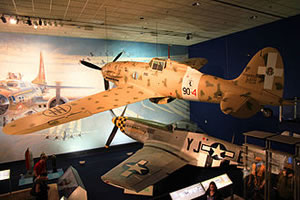
Smithsonian American History Museum
American history and culture, vignettes on all of America's wars, Abraham Lincoln and George Washington memorabilia, the original Star Spangled Banner, old cars, trains buses, boats, a piece of the original Route 66, First Ladies' Inaugural gowns, popular culture memorabilia. They have a cafeteria inside the museum. The museum is huge, so don't expect to be able to visit the entire museum in a single visit. The American History Museum is one of the busiest museums in Washington DC. Try to go early to avoid large group tours. Check the Smithsonian extended hours calendar to see if they are open late or have any special events.

Smithsonian African American History and Culture Museum
A history of the African American experience in America. Entering the museum, the visitor is encouraged to start their tour by taking the elevator three stories below ground. Upon exiting, the visitor is in a dark and claustrophic area symbolizing the hold a slave ship sailing to the Americas. The exhibits start with the experience of slave capture and trading in Africa, transportation to the New World, slavery, then abolition, Jim Crow, and the Civil Rights Movement. There is a lot to see and read, and just this part of the museum could take you all day to visit if you want to read everything. On the upper floors, the museum has large displays on African American popular culture, sports as well as political achievements by prominent African Americans. There is an excellent soul food cafeteria, which is worth a visit on its own. This museum is the most recently opened of the Smithsonians having opened only in 2016. To avoid overcrowding, pre-arranged free tickets have been necessary in the past. However, the Smithsonian Institution has been experimenting with walk up entry as well. Typically, weekdays have been available for walk-up entry whereas weekends and holidays would require a free online reservation.The Smithsonian provides information on passes to the African American Museum. The African American Museum has a very innovative modern design that evokes both traditional West African architecture and a ship sailing to the New World. As you go through the museum, you are traveling up from darkness into light. If you stand at the corner of 15th and Constitution just before sunset, the outer shell of the building grabs onto the dying rays of the sun and turns a bright gold for a few minutes.

Smithsonian American Indian Museum
This is one of the newer Smithsonian museums, having only opened in 2006. Rather than a chronological history, the American Indian Museum separates the collections into regional tribal groups, with each area containing hundreds of archeological, cultural, and artistic artefacts. On the fourth floor, they have a wonderful collection of antique firearms dating back to the 1500's. The museum has an excellent cafeteria called Mitsitam specializing in Native American dishes. This is probably the best food available on the National Mall. The exterior design of the building itself makes for a worthwhile visit. Evoking the cliff dwellings of the American Southwest indians, there is an artificial spring that becomes a river which flows down the side of the building ending in a dramatic waterfall. On the grounds of the museum, there is the newly opened Native American Veterans Memorial. During the Spring, Summer and Fall the museum maintains a large outdoor garden of endemic food staples of the new world -- potatoes, corn, tomatoes, squash, chile peppers, and sunflowers are all planted here, and they are harvested each fall and used in the kitchen of the museum cafeteria.
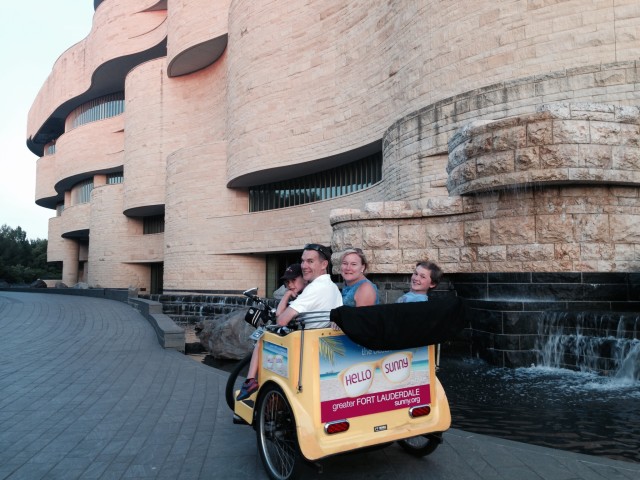
Smithsonian Portrait Gallery and American Art Museum
This is really two museums housed within a very impressive large historic building (the old Patent House). The Portrait Gallery has portraits of all the presidents and many famous Americans, including the original 1796 Landsdowne Painting of George Washington. The American Art Museum has collections dating from the earliest pioneers all the way to contemporary American Art. The a wonderful collection of paintings from the Old West, including the famous George Catlin portraits of American Indian chieftains. The museum cafe is set under an enormous atrium that is frequently the scene of evening events. Unlike other Smithsonians, the American Art and Portraint Gallery is open from 11:00 AM until 7:00 PM. It is located a few blocks away from the National Mall in Penn Quarter, surrounded by many nearby restaurants, bars and theaters.

Smithsonian Renwick Gallery
The Renwick Gallery is a museum of high level American arts and crafts. In addition to the permanent exhibits, the museum is well known for innovative special exhibits that are simply amazing. Set inside a unique mid-19th century mansion, the architecture of the building is impressive. You might consider combinging a visit to the Renwick Gallery with a visit to Lafayette Park and to the north lawn of the White House nearby. Across the street, the Eisenhower Executive Office Building is one of the most magnificent old buildings in Washington DC. There are several restaurants and cafeterias within a block or two radius.

Smithsonian Freer Gallery
The Freer Gallery and the Sackler Gallery are two adjacent buildings, collectively known as the National Museum of Asian Art. The Freer Gallery also has a large collection of the American artist James Whistler. They may look like smaller buildings above ground, but both connect together three stories underground along with the African Art Museum. As a complex, it's quite large. Cafeteria food can be had in the Smithsonian Castle next door.

Smithsonian Sackler Gallery
The Sackler Gallery specializes in Asian art. There are frequent special events here, including free Asian cinema showings. Although it doesn't look large from the outside, the Sackler Gallery connects with the Freer Gallery and the African Art Museum three stories underground to make a large museum complex.

Smithsonian African Art Museum
Not to be confused with the African American History and Culture Museum, the African Art Museum specializes in archeological and anthropological pieces from the African continent. Highlights include beautiful pieces in worked gold from the ancient West African kingdoms and intricate woodwork from acorss the continent. In addition to their collections of ancient African art, the museum frequently hosts exhibits of modern African artists. Connected with the Freer Gallery and the Sackler Gallery three stories underground, the African Art Museum forms a part of a much larger museum complex. If you get hungry, the Smithsonian Castle next door serves cafeteria food. In early spring, just before the Cherry Blossoms come out, the Haupt Garden between the African Art Museum and the Smithsonian Castle is full of blooming magnolia trees, and one of the most beautiful spots in Washington DC.

Smithsonian Postal Museum
The Smithsonian Postal Museum is a hidden gem. It's so much more than just a boring collection of old stamps. In addition to philately, the museums covers the western expansion of the United States, including a history of travel by horse, train, ship and air. This museum is a few blocks off the National Mall right across the street from Union Station, which is also an interesting building to visit. There is food to be had at Union Station, as well as a couple of Irish pubs across Massachusetts Avenue.

Smithsonian Castle
The Smithsonian Castle is not a museum per se, although it does have sample exhibits from each of the other Smithsonian 19 Smithsonian museums. The Castle contains the information center for all of the Smithsonian museums as well as cafeteria and a gift shop. Visitors will be attracted to the magnificent Gothic design of the Castle, which is one of the most iconic buildings in Washington DC. The architeture of the building and the unique photo opportunities are what you will find most interesting here.

Smithsonian Hirshhorn Gallery
If your taste in art runs to the contemporary, you will find the Hirshhorn Gallery to be fascinating. If you prefer more traditional art, then you might be better off at the West Building of the National Gallery of Art across the National Mall. In addition to permanent exhibits, the Hirshhorn frequently hosts magnicently creative large special exhibits which sometimes become so popular that you might have to reserve an advance ticket. Just outside the Hirshhorn is a sunken outdoor sculpture garden. One of the most iconic sculptures of the city, "The Burghers of Calais" by Rodin is featured here. Dolcezza is a gourmet coffee and gelato shop located at the museum.

Smithsonian National Zoo
Although, not technically a museum, the National Zoo is run by the Smithsonian Instiution and is free to the public. The National Zoo is one of the foremost zoological gardens in the world, and is well worth a visit whether you are traveling with children or not. For the most part, anmials have very large enclosures, and the zoo attempts to maintain a resemblance of the natural habitat. One of the highlights is the panda enclosure. The National Zoo has two adult pandas and a panda cub with both outdoor and indoor enclosures. Several activities take place during the day to keep the pandas active including feeding and play time. Other major attractions are the innovative elephant enclosure, the cheetahs and the polar bears.There are many endangenered species at the National Zoo, and there are constant activities with the more popular animals. The Zoo spans 163 acres, so you could easily spend the entire day here. While not directly downtown, the National Zoo is not too far away. Without traffic, the Zoo is about 10 minutes drive or an inexpensive taxi/Uber ride from the National Mall. There is also a Metro station nearby.

Smithsonian Anacostia Community Museum
Anacostia Community Museum is dedicated to displaying a range of exhibitions on urban communities in Washington DC and around the nation. There is a focus, of course, on the urban community of Anacostia, a predominantly African-American community in Washington DC. At the museum, you will see exhibits on the diversity of urban communities and the challenges facing them. The Anacostia Community Museum is not located directly downtown. However, without traffic, it's only about a 10 minute drive or taxi/Uber ride away from the National Mall in the neighborhood of Anacostia. Free parking is available. The museum does not have a cafeteria, but several restaurants are located in the community.

Other Major Museums in Washington DC
Washington DC hosts numerous other major museums in addition to the Smithsonian. Here are the major ones. They are all free to the public unless noted:
National Gallery of Art
The National Gallery of Art is undoubtedly one of the top art museums in the world. It's exhibits are not quite as wide-ranging as the Metrolopolitan Museum of Art in New York or the Louvre in Paris -- there are no exhibitions of ancient Egyptian, Assyrian, or Persian art -- but for Rennaissance, 19th Century and American art, and medieval religious art, the National Gallery cannot be beat. You don't need to consider yourself an art connoisseur to thoroughly enjoy this museum. Many first time art museum visitors find this to be the favorite museum in the city. If you are a first time art museum visitor, I highly recommend you enter by climbing the steps from the National Mall entrance. Upon entering the main hall, turn right for the best of the Rennaissance masters, 19th Century impressionists and American artists. The museum is divided into two buildings. In the West Wing, you will find more traditional art by the great masters. In the East Wing, you will find large pieces of sculpture and contemporary art. A tunnel of gleaming lights connects the two underground. The National Gallery has an excellent restaurant and cafeteria on the lower level. Kids will greatly enjoy the tunnel between the two museums, which evokes a space ship entering into hyperspace. Kids will also enjoy playing among the pyramidical structures in the ground-level plaza between the two museums, which has numerous mirrors. If you are here with kids, go across the street to the Canadian Embassy and go into the circular area bounded by columns -- it's an echo chamber and one of the favorite places for kids to visit in DC.

Thomas Cole - The Course of Empire: Destruction
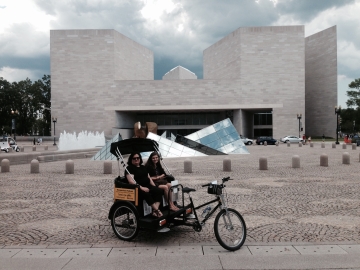
Holocaust Memorial Museum
The Holocaust Memorial Museum provides a detailed history of the Nazi genocide against the Jewish people and others during World War II. The Museum showcases the rise of the Nazi Party, the subsequent period of legal restrictions against and concentration of Jews in Nazi Germany, and finally the coldly calculated mass murder of millions of people due to a perverse political ideology. There are numerous Holocaust museums around the world. The one in Washington DC is probably the 2nd most important after Yad V'shem in Jerusalem This is a very somber museum and may not be appropriate for young children. Entrance is free, but during the high season between March and August you should definitely get your tickets online in advance. Click for Holocaust Museum online tickets. The Holocaust Museum has a cafeteria on the premises that does not require a ticket to enter.

Museum of the Bible
The Museum of the Bible is the most recent large museum to open in Washington DC. They have innumerable ancient and medieval bibles in many languages and actual fragments of the Dead Sea Scrolls, a recreation of the area around Nazareth from 2000 years ago, along with museum staff playing the role of villagers to teach you about the way of life during that time. erhaps the highlight of your visit is a 30 minute audio visual experience about the Old Testament -- the Creation, the Great Flood, the Parting of the Red Sea, and David and Goliath are all part of this experience. The museum has attached restaurant called Manna, which has delicious Mediterranean food. The Museum of the Bible is a few blocks off the National Mall, but within easy walking distance. Entry to the museum is by donation.

US Botanic Garden
The US Botanic Garden is on the western grounds of the US Capitol. Although there are outdoor gardens, the highlight is the large glass-roofed building that operates as a giant greenhouse. Within, you will find an enormous tropical jungle room, as well as rooms dedicated to desert cacti, ferns, Hawaiian plants. Throughout the building, there are fantastic orchids, trees, flowers and colorful plants of all descriptions. Even if you don't think you are particularly interested in plants, you are likely to find the Botanic Garden fascinating. Admission is free. Truly fantastic. The Botanic Garden is near the US Capitol and the Ulysses S Grant Memorial. If you come in the evening, the Bartholdi Fountain in a small park across Independence Avenue is a truly beautiful and romantic location.

Bureau of Engraving and Printing
The Bureau of Engraving and Printing is the actual factory where money is printed. It's next door to the Holocaust Museum, and less than a block away from the National Mall. The Bureau offers free 40 minute tours every 15 minutes where the visitor can watch the entire process of printing money from the design of the plates to the actual printing presses humming along with sheet after sheet of $100 bills rolling off fresh. During the high season from March through September, you will need a free ticket to enjoy the tour. Same-day tickets are given out first-come first-serve weekday mornings from a kiosk on 15th Street. During off-season, you can walk up to the entry gate on 14th Street and either pick up a ticket for later in the day or else potentially get to enter on the very next tour. If you want to book a tour, you must do so through your Congressperson's office. All Congressional members have staff that can book tours for you at the Bureau of Engraving and Printing and the US Capitol. They can also help with White House tours. You can also skip the tour and just go and visit the Visitors Center and gift shop without a ticket. The Visitors Center has an exhibition area of old currency, which is fascinating. Find more information on tickets for Bureau of Engraving and Printing Tours. Don't forget to ask your tour guide to show you the owl on the $1 bill.

International Spy Museum
The International Spy Museum is a private museum located in L'Enfant Plaza a few blocks from the National Mall behind the Smithsonian Castle. Note that entry to this museum costs $25 for adults, and $17 for kids (small children enter free). This museum is often one of the favorites for kids of all ages. Upon entry, receive your cover identity and prepare to test your spy skills on your undercover mission throughout the Musuem. In addition, the museum is chock full of gadgets, with hands-on exhibits on code-breaking, thinking like an analyst, and other spy skills. There are exhibits on successful and unsuccessful missions around the world and the history of spying. They sell drinks and some snacks at the Spy Museum, but they don't have a full restaurant or cafe.

Phillips Collection
The Phillips Collection is a private art museum near Embassy Row. The collection of Duncan Philips contains the works of many well known artists, and the curators are continually adding contemporary artworks to the collection. The Phillips is about 1.5 miles from the National Mall just off Massachusetts Avenue on Embassy Row. Until recently, general admission was free, but it is now $16 per adult.Some free entries are still available via the Phillips Collection website.

Luncheon at the Boating Party - Renoir
National Museum of Women in the Arts
Located off the Naitonal Mall, but just a few blocks away from the White House, the National Museum of Women in the Arts brings recognition to the achievements of women artists from all periods and nationalities. this is a private museum, and adult general admission is $10.

National Arboretum
The National Arboretum is a large and very beautiful botanic garden known for its many flowering trees and plants. It is a short drive or taxi/Uber ride from downtown Washington DC. Spreading over 446 acres, the Arboretum has 9.5 miles of winding walkways. The highlights include the azaleas and dogwoods in full bloom and the magnificent bonzai collection. If you are here at the right time of year, the azaleas are a site to behold. Admission is free.

Newseum
This was an extraordinary museum of the media and the news. Unfortunately, it has now closed permanently. You could once have seen the original front pages from major historical events, Pulitzer Prize photos from the last 75 years, and excellent special exhibits. There was a wonderful balcony overlooking the city. This museum was not free, and perhaps that was its downfall. They used to have an exhibit called Today's Front Pages out front on the sidewalk -- one front page from every state in America that was changed daily, along with several front pages from international newspapers. Unfortunately, the museums is gone for good.

Public Buildings of Interest
White House
The White House is the residence of the US President. There are two spots to view it from the outside. Pennsylvania Avenue goes by the North Lawn at Lafayette Park. This is a great view of the White House from up close. The street is closed to vehicular traffic and has been turned into a nice pedestrian plaza. This is where Lafayette Park is. The South Lawn is the more well known view. Pedestrians can access this view from a sidewalk that borders the former E Street. E Street has been closed to vehicles and pedestrians, but just walk down the sidewalk for a great view. Visitors are squeezed into a small space here, so be prepared to wait your turn for a photo. Alternatively, a great view of the South Lawn of the White House can be had from Constitution Avenue as well, albeit you are further away. A view of the White House from above can be had from the POV Bar on the roof of the W Hotel on 15th Street. If you want a tour of the interior of the White House, you must apply well in advance through the office of your congressperson or senator. Their individual websites typically have a spot to click on for tours of the White House and US Capitol. Not everyone is approved. Don't take it personally if your visit is not accepted -- the problem is really too many people want to visit the White House. If you get approved, the visit is free.
US Capitol
There are many good spots to view the US Capitol from the outside. On the west, the best view is by General Ulysses S Grant Memorial on 1st Street NW. To the east, there is a big wide plaza with fantastic views on 1st Street NE. If you walk around the entire building, you will have wonderful views on all sides. The interior of the building is fantastic. Access to the public is free. The US Capitol is open to the public from 8:30 AM to 4:30 PM, Monday - Saturday. You should really get a free advance pass from the US Capitol Visitors Center online before you go. If you don't have one, you will probably be looking at a long wait to get in. A better option is to book a tour through the office of your congressperson or senator. Frequently, they will set you up on a private tour with an intern. This tour will be more complete than the tour you will get from the Visitors Center. You can get breakfast or lunch at the congressional cafeteria.
Old Post Office Tower
The Old Post Office Tower is a tall clocktower right in the center of town. It is the second tallest building in the city after the Washington Monument. There is an observation deck with large windows and a fantastic overview of the city from above. Admission is free. Last entry is 4:30 PM. Access is from 12th Street between Constitution and Pennsylvania Avenues. Note that the observation deck is operated by the National Park Service. The rest of the building has been renovated into the Trump International Hotel. The observation deck and the hotel are entirely separate entities. Whatever your personal political feelings are, don't let politics dissuade you from visiting the fantastic observation deck. Typically, there is no wait at all to go up to the observation deck. The hotel lobby is accessed from the other side of the building. This is an historic building, and the hotel lobby is truly magnificent. There are no special security procedures to enter the lobby of the hotel.
Library of Congress
The Library of Congress is among the loveliest buildings in the city. Admission is free, and the Library is open to the public from 8:30 AM to 4:30 PM, Monday - Saturday. There are free guided tours of the building every hour, but you may also walk around on your own. The Library of Congress also has a number of permanent and temporary exhibits. The main historic building is called the Jefferson Building. Across the street in the Madison Building, there is a rooftop café with breakfast and lunch hours. The Library of Congress, Supreme Court and the east plaza of the US Capitol are all nearby and definitely worth a visit if only to see them from the outside.
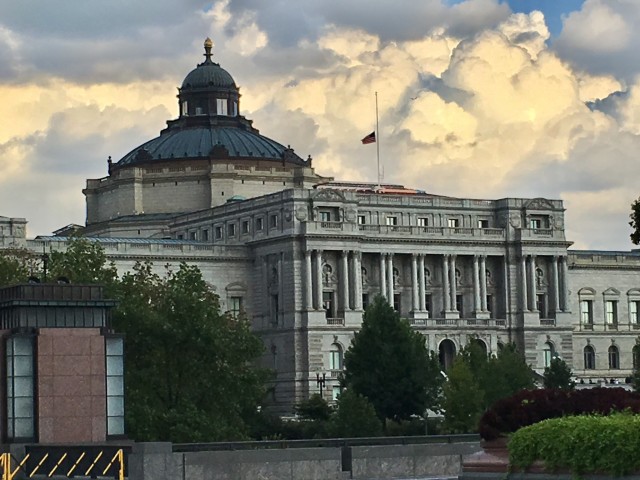
Supreme Court
The Supreme Court is right next to the Visitors Center for the US Capitol and the Library of Congress. You can visit the Supreme Court from 9:00 AM to 4:30 PM Monday to Friday. If you just want to tour the building, you can generally walk right in. Court sessions are also open to the public on a first come, first serve basis. For any cases that have attracted public attention, you should arrive early and wait in line. If you just want to see walk around the building, go ask the guard if you can walk in without waiting on line. A lunch café is open to visitors.
Kennedy Center
The Kennedy Center is the performing arts center in Washington, DC. National Symphony Orchestra, ballet, opera, and even Broadway shows perform here. Even if you are not attending a show, a visit to the building is recommended. Free tours are available by the staff. Go up to the rooftop for a beautiful view of the Potomac River and the Lincoln Memorial. Walk through the Hall of States to see giant flags of the 50 states hanging from the ceiling. Go into the Hall of Nations to see all the flags of the world hanging from the ceiling as well. The building is also decorated with artwork of all kinds. Every evening of the year at 6:00 PM, there is a free performance called the Millenium Stage in the rear lobby area overlooking the Potomac River. Many excellent artists come to perform. No tickets or reservations are required, nor do you need to dress up. A happy hour menu of drinks and snacks is available.
National Cathedral
The National Cathedral is an enormous non-denominational church that is open both to sightseers and to those who come to worship. Although it is not right down, you can easily get here by taxi. You might consider walking up Massachusetts Avenue from DuPont Circle. This section of Massachusetts Avenue is known as Embassy Row. Architecturally, the National Cathedral is very impressive, with much artwork and many gardens. If you are here as a tourist to see the building, there is an admission of $12 for an adult, and $8 for a child. If you come to worship, then admission is free. Sunday services are free to all. Check the National Cathedral website for details.
Neighborhoods
Georgetown
Georgetown is a very desirable and exclusive residential neighborhood with a long history -- it actually predates Washington DC. There are three sections to visit. On the waterfront, you can find many places to eat overlooking the Potomac River. The commercial area is along M Street between 29th and 35th Streets and also along Wisconsin Avenue. You will find many boutiques, hotels and eateries in this area. North of M Street is a quiet, tree-lined residential area. The homes are very expensive here. Walk along N and O Streets and take in some of the ambience. O Street ends at Georgetown University, which is very impressive.
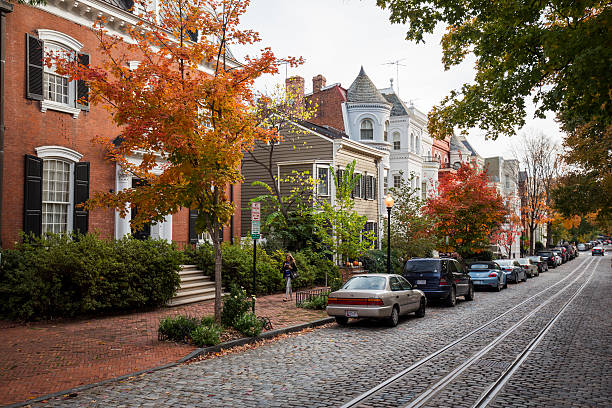
Embassy Row
Embassy Row runs west from Massachusetts Avenue up to the National Cathedral. You can see over 100 embassies from all over the world just in this area. Many of them are housed in elegant townhouses dating back to the late 19th and early 20th centuries. Spot the flags outfront. If you don't recognize each of the flags, don't worry. Each of the embassies has a plaque to identify it with the name of the country. There are also many statues of foreign leaders placed here. You can visit the Philips Gallery Museum, or the Anderson House (an old mansion) on the way. The Islamic Center, the first mosque in Washington DC, is also open to visitors. About halfway up to National Cathedral, you will pass by the United States Naval Observatory. This is the official residence of the Vice President. The Master Clock is right out front, displaying the official hour from which we all set our watches.
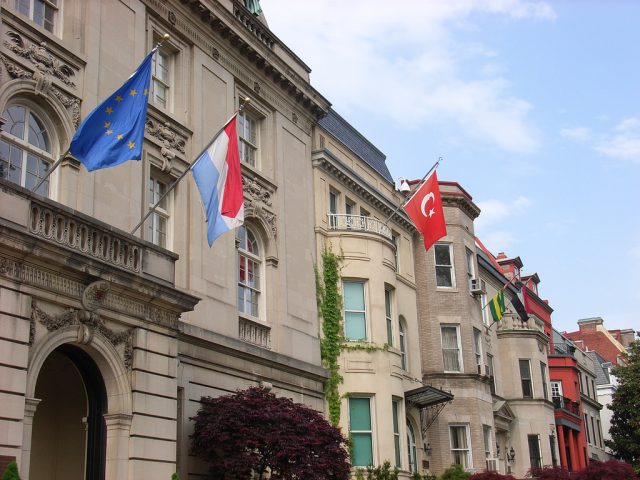
DuPont Circle
DuPont Cicle is a very well-to-do neighborhood close to everything. You will find very nice tree-lined residential streets full of beautiful townhouses. There are also a large number of foreign embassies in the area. DuPont Circle has many eating establishments and fine restaurants. Connecticut Avenue is the commercial hub of the area.
Capitol Hill and Eastern Market
Capitol Hill is a fine neighborhood right behind the US Capitol with many tree-lined streets and historic townhouses. Eastern Market is on Capitol Hill only a few blocks from the US Capitol. You can get find food products, meats, vegetable, fruits, etc. Quite a number of restaurants are right nearby. On the weekends, the streets surrounding Eastern Market have hundreds of stalls displaying handicrafts and artwork.
Discover more things to do in Washington District of Columbia.




